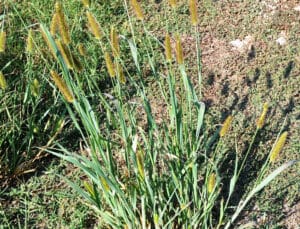Ilex verticillata ‘Winter Red’
Description
Breaking the stereotypes that suggest hollies will only flourish in the south, the Winter Red Winterberry Holly has an extremely high tolerance for freezing temperatures as well as heavy layers of ice and snow. It truly lives up to its name and not only survives, but flourishes.
Every fall, these deciduous Winter Reds develop vibrant red berries that pop against the green foliage and stay throughout the season, even after the leaves drop. They glow in the landscape, providing bursts of color in the empty winter countryside. New growth emerges dark burgundy in the spring before maturing to signature green, imparting further visual interest.
Plus, Winter Red Hollies are compact shrubs, so they’ll fit perfectly as ornamental shrubs in smaller areas. They’re perfect for accenting gardens and framing porches, or planting in a row for a dense privacy screen. And though you do need an Apollo Winterberry to pollinate your Winter Red, planting and growing are simple.
Planting
Choose a location where your Winter Red will receive full sun (6 to 8 hours of sunlight per day) and well-drained soil. If you’re in an area where hot, dry summers are common, provide your plant with partial shade in the afternoon. Dig a hole that’s as deep as the root ball and twice the width. Amend the soil with acid-rich compost made from organic matter. Carefully remove the plant from its container and place it in the hole. Fill the hole surrounding the roots with soil, tamping down firmly. Water your plant to help remove air pockets from the soil.
Watering
Water your Winterberry Holly regularly after planted, ensuring the soil is moist to a depth 2 inches down. Once the plant is established, it will be somewhat drought tolerant but will produce a larger amount of flowers and berries if watered regularly.
Fertilizing
Winter Reds do not typically need to be fertilized unless they’re growing more slowly than normal. If this is the case, apply 10-10-10 fertilizer in spring around the base of the plant. Be sure to follow the application instructions on the label for optimum performance.
Pruning
Prune your Winterberry in early spring to remove any dead or diseased branches, or branches that are crisscrossing and rubbing together. Make your cuts at a 45-degree angle, ensuring the clipping tools are sterilized with alcohol.
Pollination
This holly is a female-only cultivar that requires the presence of a male holly in the same area in order to produce berries.
| Growing Information | |
| Mature Height: | 6-8 ft |
| Mature Width: | 6-8 ft |
| Sunlight: | Full to Partial Sun |
| Bloom Time: | |
| Growth Rate: | Slow |
| Grows Well in Zones: | 3-9 |
| Your Growing Zone: | 6 |





